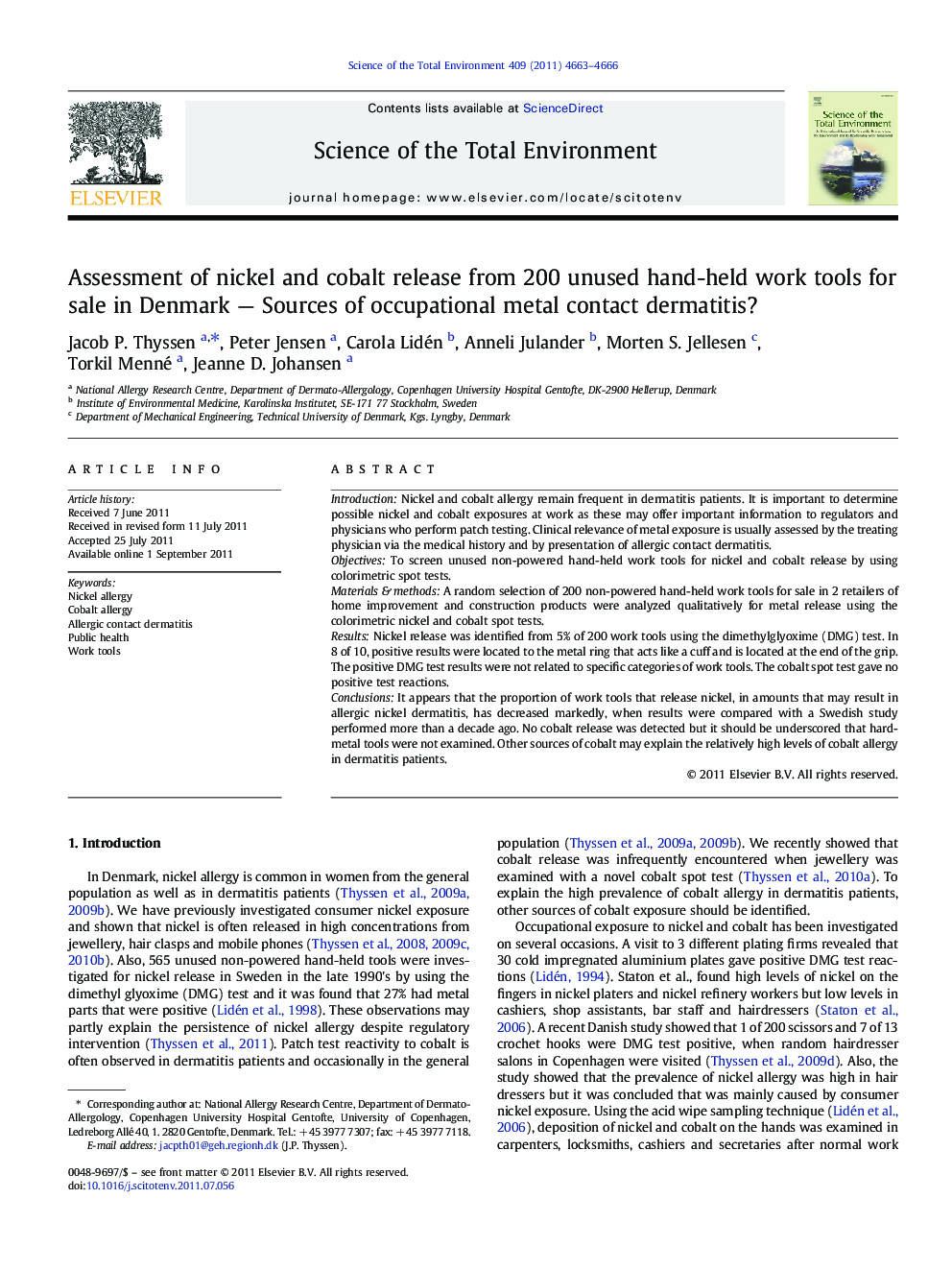| Article ID | Journal | Published Year | Pages | File Type |
|---|---|---|---|---|
| 4429953 | Science of The Total Environment | 2011 | 4 Pages |
IntroductionNickel and cobalt allergy remain frequent in dermatitis patients. It is important to determine possible nickel and cobalt exposures at work as these may offer important information to regulators and physicians who perform patch testing. Clinical relevance of metal exposure is usually assessed by the treating physician via the medical history and by presentation of allergic contact dermatitis.ObjectivesTo screen unused non-powered hand-held work tools for nickel and cobalt release by using colorimetric spot tests.Materials & methodsA random selection of 200 non-powered hand-held work tools for sale in 2 retailers of home improvement and construction products were analyzed qualitatively for metal release using the colorimetric nickel and cobalt spot tests.ResultsNickel release was identified from 5% of 200 work tools using the dimethylglyoxime (DMG) test. In 8 of 10, positive results were located to the metal ring that acts like a cuff and is located at the end of the grip. The positive DMG test results were not related to specific categories of work tools. The cobalt spot test gave no positive test reactions.ConclusionsIt appears that the proportion of work tools that release nickel, in amounts that may result in allergic nickel dermatitis, has decreased markedly, when results were compared with a Swedish study performed more than a decade ago. No cobalt release was detected but it should be underscored that hard-metal tools were not examined. Other sources of cobalt may explain the relatively high levels of cobalt allergy in dermatitis patients.
► Nickel and cobalt allergy is common. ► It is important to identify sources of exposure to prevent disease. ► Nickel and cobalt spot testing was performed on 200 handheld work tools. ► 5% released nickel and none released cobalt.► This information is useful for industry regulators and physicians.
